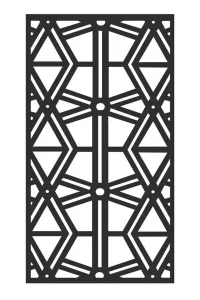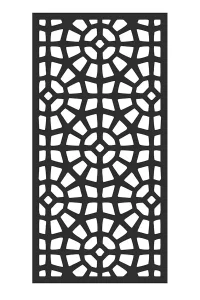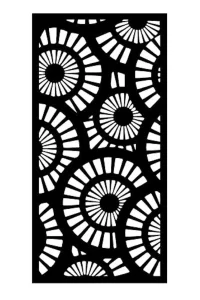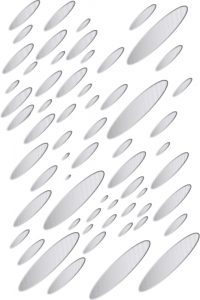Technology
I deal with four forms of room dividers.
All four ways aim to create a spectacular display of Tiffany glass.
- Glass Space Dividers
- Steel dividers with glass inserts
- Tiffany fused in wrought iron
- Hand-painted silk wrapped in glass
The beauty of tiffany glass
A glass divider made from any image will be a dominant feature in today’s sleek interiors. The light filtering through the magical colors of the handmade unique “art glass” will create a vibrant, pulsating effect in the space where it is placed.
With the changes in the light of the sun, the different colored glass pieces make the passage of time playful with constantly changing shades.
The price per m² of glass paintings, depending on the customer’s ideas and the price of the glass used, is 4,200 EUR + VAT (+/- 10 %)
When steel and glass meet
Any pattern can be laser-cut into the steel sheet, which is then partially or fully filled with Tiffany glass.
With this solution, flat or three-dimensional shapes can be created, creating an atmosphere with sunlight during the day and interior lighting at night.
This technological solution, developed by us and available only from us, fits well into modern spaces, and its price is also significantly more favorable than that of pictures made of glass only. Depending on the customer’s ideas and the amount of glass used, the average price per 1 m² is: 650 EUR + VAT (+/- 10%)
The combination of wrought iron and glass
Wrought iron motifs (flower petals, leaves, or other abstract shapes) can be added to stair and terrace railings, but also to gates and fences, using Tiffany glass for a truly unique look.
Check out our design ideas put together by our master ornamental iron maker partner in the gallery.
Hand-painted silk wrapped in glass
A special technique makes it possible to pour the natural colors of hand-dyed silk into glass and insert them onto a wooden board of the desired shape, size, and color, or into a laser-cut steel plate.
It is also possible to set up the “glass silk” image independently in a larger size.
With this technique, it is also true that the – preferably natural – light coming from behind contributes significantly to the view.
For further inspiration in terms of colors and shapes, we warmly recommend Gabi Varró’s silk painting workshop (www.varrogabi.hu).
The price per m² of fiberglass panels is mostly determined by the complexity of the pattern to be painted, its size, and the material of the panel enclosing the glass. If you liked this unique technique and have any ideas, write to us, and we will help you put it into shape.
Design ideas
In interiors with different styles and purposes, we can install panels of different materials, shapes, and colors.
We are constantly expanding our range of ideas to give you more inspiration.
For personalized ideas, I heartily recommend interior designer Zsuzsanna Paál. [www.paalart.hu]
Design Ideas
patterns...
Technological background
Glass dividers
The technique invented by L.C. Tiffany over a century ago allows the creation of meticulous patterns in a durable, timeless way. In some contemporary buildings, 100-year-old works of art, windows, and glass walls are still standing strong today. Although today’s “art glass”, which exists in a variety of colors, is made of several layers of glass that are fused, making it relatively strong and giving the images slight flexibility due to the soft metal alloy used to assemble them, they are still glass images and therefore relatively fragile.
If necessary, broken pieces can be replaced, although the limitations of the technology mean that this can only be done in a horizontal position, which means that the image has to be removed from its place. Repairs can also be carried out by other professionals, in which case our workshop will cut and polish the required piece to size if the color and type of glass are still available.
We keep an accurate record of all images and elements produced, with the pattern and color of the glass fitted, so a photograph of the damaged piece is sufficient for identification.
Steel and glass dividers
We laser-cut a 3 mm thick steel sheet following the customer’s design and then glaze it in part or all of the chosen colors.
The steel base allows you to create not only a flat shape but any spatial form that lets in natural light during the day and creates a mood at night with built-in light sources.
Wrought iron railings, gates with Tiffany glass
Another unique feature of our workshop is that we work together with a master ornamental ironmaker, with whom we create shapes according to the client’s needs and choice of patterns, in which all the beauty of both wrought iron and Tiffany glass can be harmoniously displayed.
The glass-silk room dividers
With special technology, it was possible to “glue” individually dyed silk between 2 pieces of 4 mm glass, with that we get an approx. 9 mm “sandwich panel”, which is sufficiently strong and stable, yet preserves the special colors of the silk. It is possible to use the resulting glass panel alone as a room divider or to insert the cut-to-shape glass silk into a wooden or laser-cut steel panel of any color, or a veneered MDF board.
Our renowned silk dyeing partner, Varró Gabi – www.varrogabi.hu – paints any pattern you want, and we frame it in glass up to a size of 370×250 cm.






















